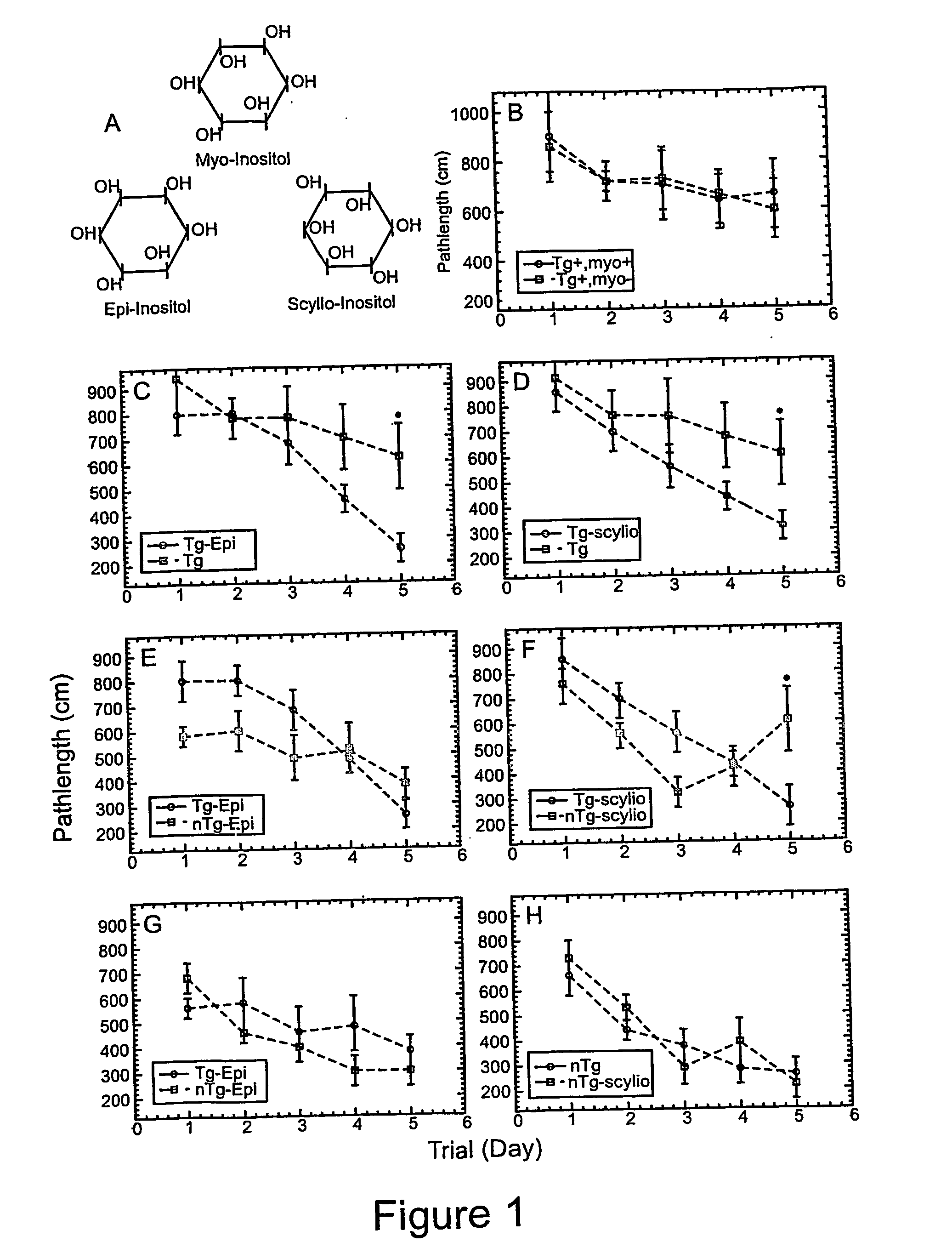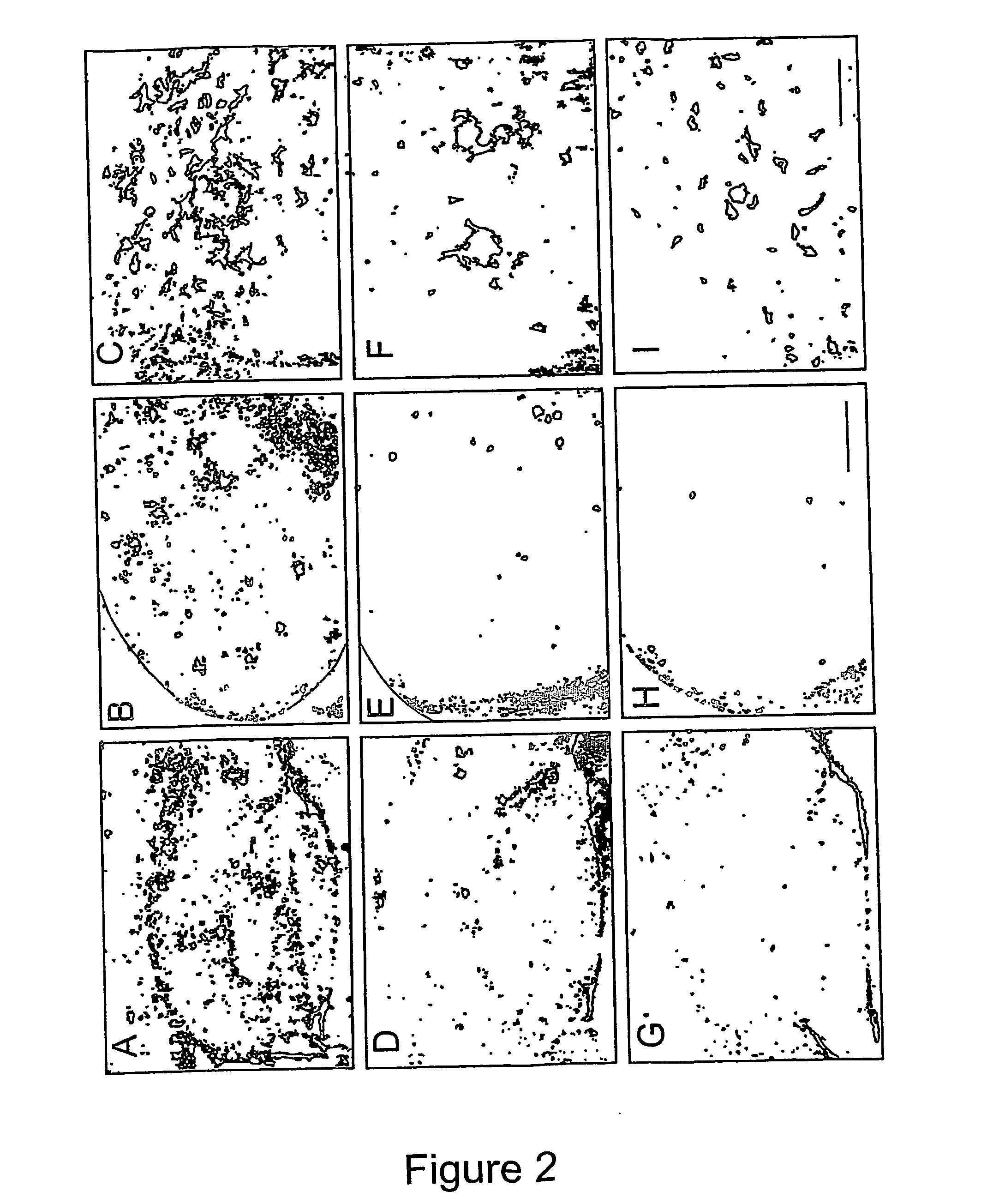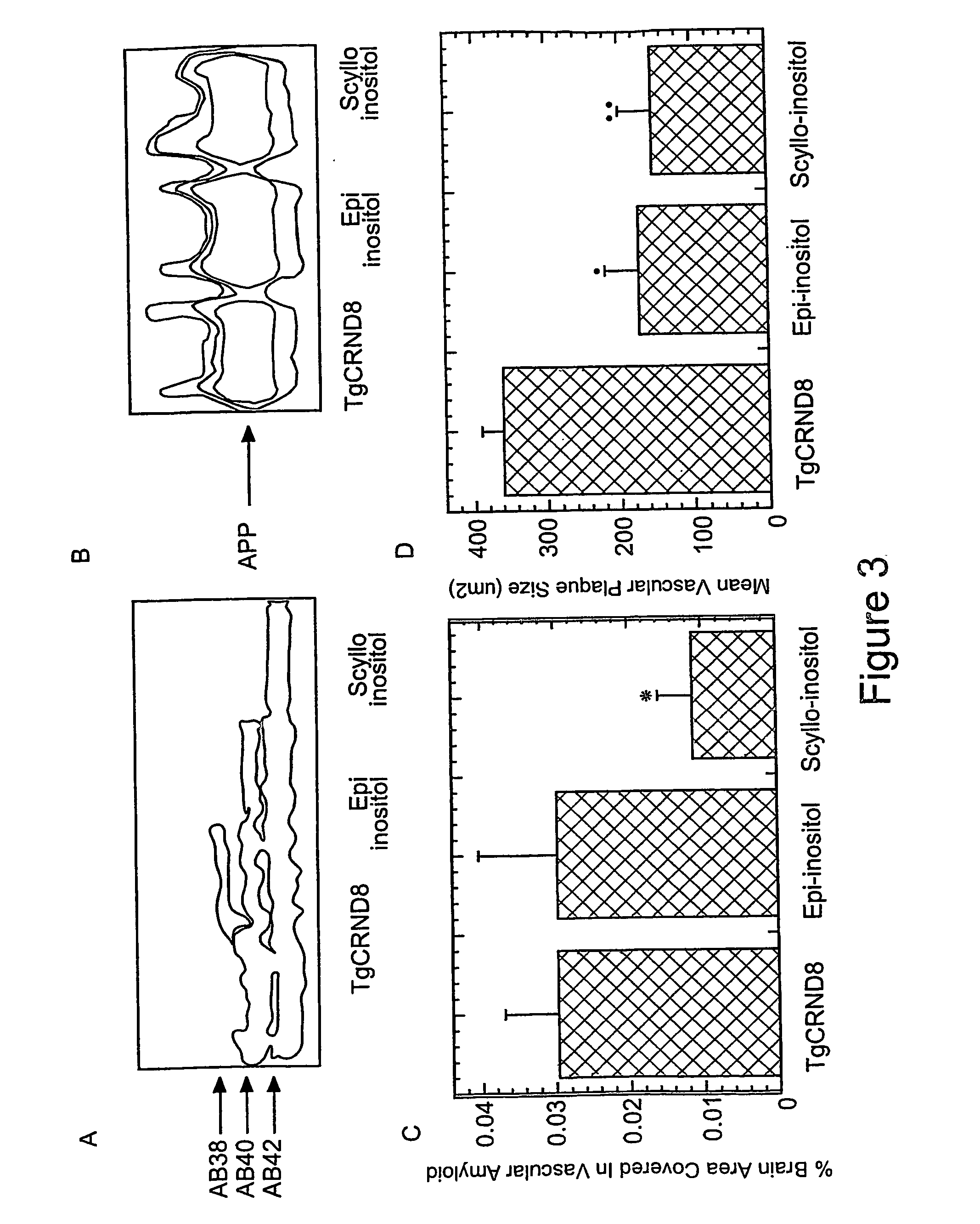Method of preventing, treating and diagnosing disorders of protein aggregation
a protein aggregation and disease technology, applied in the field of disease prevention, treatment and diagnosis of disease of protein aggregation, can solve the problems of no cure or effective treatment, no indication of the use of inositol isomers, and possible addition of a to their insolubility and plaque persisten
- Summary
- Abstract
- Description
- Claims
- Application Information
AI Technical Summary
Benefits of technology
Problems solved by technology
Method used
Image
Examples
example 1
Development of Alzheimer's Mouse Model and Methods of Administering Compounds of the Present Invention
[0123] TgCRND8 mice are a robust murine model of Alzheimer's disease as described by Janus et al. (Nature 408:979-982 (2000). They express a human amyloid precursor protein (APP695) transgene under the regulation of the Syrian hamster prion promoter on a C3H / B6 outbred background. The human APP695 transgene bears two mutations that cause AD in humans (K670N / M671L and V717F). Beginning at about 3 months of age, TgCRND8 mice have progressive spatial learning deficits that are accompanied by rising cerebral Aβ levels and by increasing number of cerebral extracellular amyloid plaques that are similar to those seen in the brains of humans with AD (C. Janus et al., Nature 408:979-982 (2000)).
[0124] Age and sex-matched cohorts of TgCRND8 mice and non-transgenic littermates (n=35 in each cohort) were either untreated, or were given a compound of the present invention as indicated below at...
example 2
Prevention of Cognitive Deficits
[0132] The cognitive function of TgCRND8 mice was assessed using the spatial reference memory version of the Morris Water Maze using a five-day trial paradigm (FIGS. 1C-1H). Data from treated and non-treated TgCRND8 mice, and from treated and non-treated non-Tg littermates (n=10 for all combinations) were analyzed using a mixed model of analysis of variance (ANOVA) with treatment (untreated, epi- or scyllo-inositol) and genotype (TgCRND8 versus non-Tg) as ‘between-subject’ factors. TgCRND8 mice treated with either epi- or scyllo-inositol performed significantly better than untreated TgCRND8 mice (p<0.02; FIGS. 1C and D). When compared to treated or non-treated non-Tg littermates, epi-inositol treated TgCRND8 mice had a slightly slower learning curve during the first three days of training. However, after 4 days of training, epi-inositol treated TgCRND8 mice were not statistically different from their non-Tg littermates (FIG. 2E). In contrast, scyllo-...
example 3
Reduction of cerebral Aβ Burden and Amyloid Neuropathology
[0133] At four months of age, untreated TgCRND8 mice have a robust expression of both Aβ40 and Aβ42 (Table 1). Epi-inositol treatment as described in Example 1 reduced both Aβ 40 (43±2% reduction in both soluble and insoluble pools; p<0.05) and Aβ 42 levels (69% reduction in soluble pool, p=0.005; 28% reduction in insoluble pool, p=0.02) at 4-months of age. However, these improvements were not sustained, and by 6 months of age, brain Aβ levels rose to levels similar to those observed in untreated TgCRND8 mice (Table 1).
[0134] In contrast, at four months of age, scyllo-inositol treatment decreased total brain Aβ40 by 62% (p=0.0002) and total brain Aβ42 by 22% (p=0.0096; Table 1). At 6 months of age, scyllo-inositol treatment caused a 32% reduction in Aβ40 levels (p=0.04) and 20% reduction in Aβ42 (p=0.02) compared to untreated TgCRND8 mice.
[0135] Because the decreased Aβ concentrations detected after inositol treatment coul...
PUM
| Property | Measurement | Unit |
|---|---|---|
| weight | aaaaa | aaaaa |
| neuronal resistance | aaaaa | aaaaa |
| insolubility | aaaaa | aaaaa |
Abstract
Description
Claims
Application Information
 Login to View More
Login to View More - R&D
- Intellectual Property
- Life Sciences
- Materials
- Tech Scout
- Unparalleled Data Quality
- Higher Quality Content
- 60% Fewer Hallucinations
Browse by: Latest US Patents, China's latest patents, Technical Efficacy Thesaurus, Application Domain, Technology Topic, Popular Technical Reports.
© 2025 PatSnap. All rights reserved.Legal|Privacy policy|Modern Slavery Act Transparency Statement|Sitemap|About US| Contact US: help@patsnap.com



